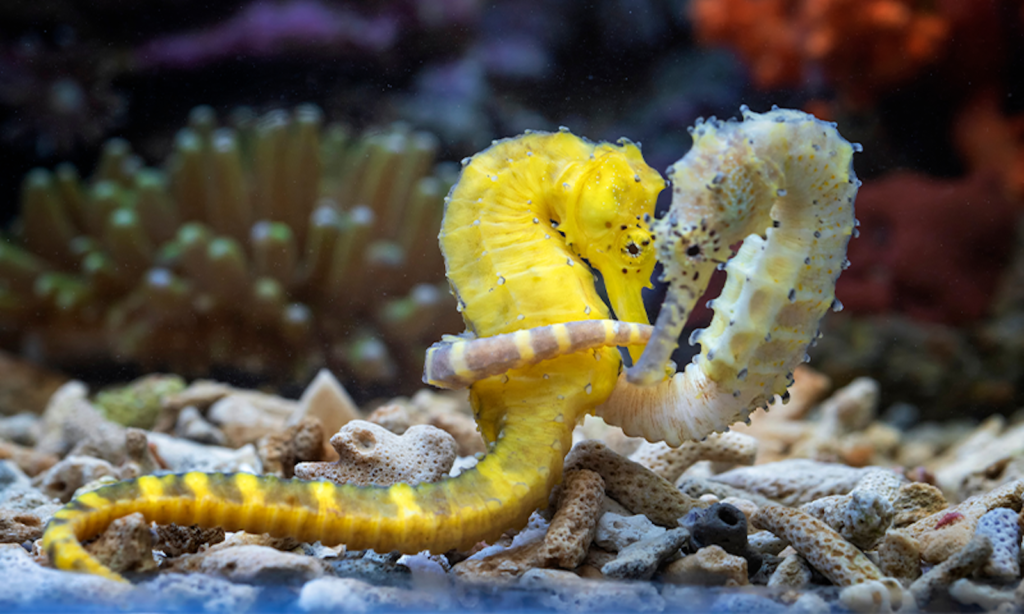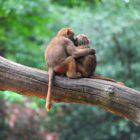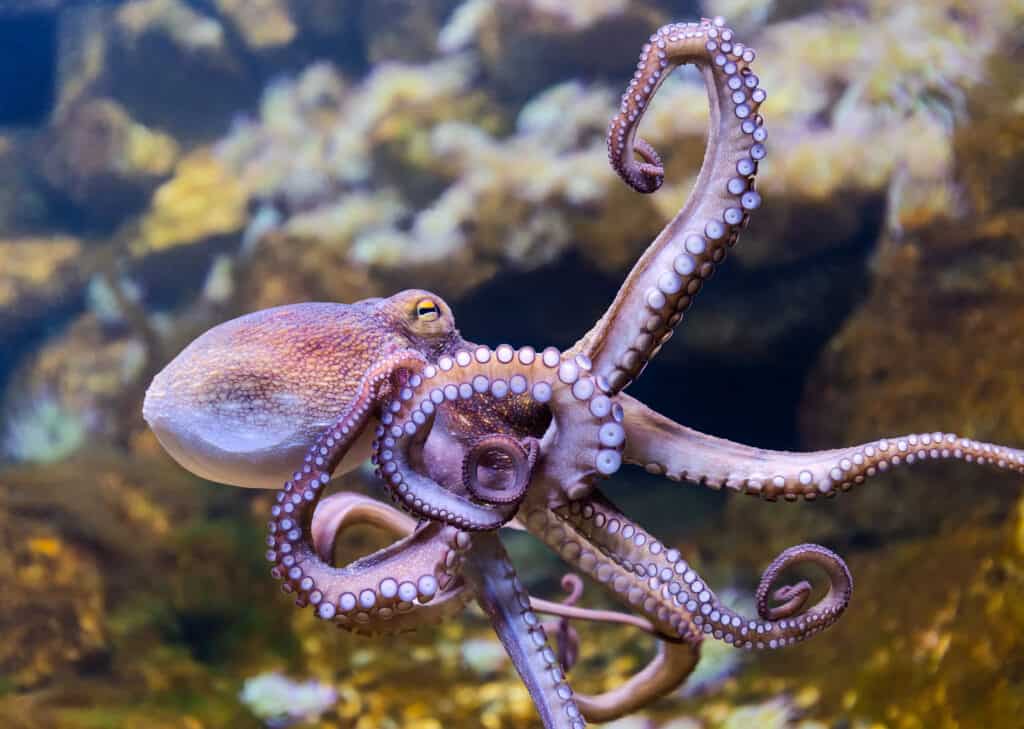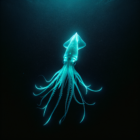Are seahorses monogamous?

Are seahorse monogamous? Before delving into the complexities of seahorse monogamy, it’s essential to understand the intricate dance of courtship that precedes it. Seahorses engage in a mesmerizing courtship ritual that involves daily displays of synchronized swimming, color changes, and intricate dances.
This courtship is not just a passing fancy; it plays a crucial role in establishing and strengthening the bonds between potential mates.
Building Trust through Shared Responsibilities
In the world of seahorses, building trust is not a mere formality but a nuanced dance of shared responsibilities that weaves the fabric of their monogamous relationships. Unlike many other species where parental duties are solely the domain of females, seahorses defy these gender norms. In a remarkable role reversal, it is the male seahorse that takes on the crucial task of carrying and nurturing the developing offspring.
The journey of shared responsibilities begins with the courtship rituals that set the stage for seahorse monogamy. Once a potential pair engages in the mesmerizing dance of courtship, a bond is formed, and they embark on a journey of collaboration that extends far beyond the enchanting underwater displays. The female seahorse deposits her eggs into a specialized pouch located on the male’s abdomen, marking the commencement of a shared parental responsibility that is unique in the animal kingdom.
Seahorses Monogamy: Cooperation Is Everything
Research has shown that monogamous seahorse pairs exhibit a higher level of cooperation in various aspects of their lives. They share responsibilities such as defending their territory, foraging for food, and even coordinating parenting duties. This collaborative effort extends beyond the initial stages of courtship and reproduction, creating a partnership that endures through the challenges of life underwater.
Interestingly, monogamous seahorse pairs often exhibit a high level of fidelity not just within a single breeding season but across multiple seasons. This loyalty is not purely driven by instinct but appears to be a result of the emotional connection and trust that develops between mates. Seahorses are known to form strong social bonds, and the commitment to monogamy is a manifestation of the depth of these social connections.
Deviations from the Norm
Seahorses, like any other species, are not rigidly bound by a single set of behaviors, and factors such as environmental conditions, individual personalities, and genetic influences can contribute to variations in their mating strategies.
In some seahorse species, the idea of a strictly monogamous relationship is challenged by observations of occasional infidelities. While the bond between mates remains strong, there have been instances where one or both partners engage in brief encounters with individuals outside their established pair. These occurrences raise questions about the nature of commitment in seahorse relationships and the factors that might trigger these deviations.
Genetic factors may also play a role in shaping seahorse behaviors. Variations in genes related to mate selection and social bonding could contribute to the observed deviations from monogamy. Researchers are delving into the genetic makeup of different seahorse populations to identify specific markers associated with social behaviors and to understand how these variations influence relationship dynamics.
Seahorse behaviors can be influenced by external stressors such as changes in water temperature, pollution levels, or alterations in their habitat. In response to environmental stress, some seahorse pairs may exhibit deviations from their typical monogamous patterns. These deviations could serve as adaptive responses to challenging conditions, allowing individuals to maximize their reproductive success under less-than-ideal circumstances.
Environmental Influences on Seahorses Monogamy
The stability of a seahorse habitat plays a pivotal role in determining the nature of their social bonds. In areas with consistent environmental conditions, such as temperature and salinity, seahorses are more likely to establish and maintain long-term monogamous relationships. Stable habitats provide a reliable foundation for seahorse pairs to invest time and energy in courtship, reproduction, and parenting without the disruptions caused by constant environmental fluctuations.
The density of seahorse populations within a specific area can influence their social dynamics. In regions with high population density, competition for mates and resources may be intense, leading to variations in mating strategies. Some seahorses may still exhibit monogamous tendencies, while others might adopt more flexible social structures to navigate the challenges posed by a crowded environment.
Genetic monogamy despite social promiscuity in the pot-bellied seahorse (Hippocampus abdominalis)










